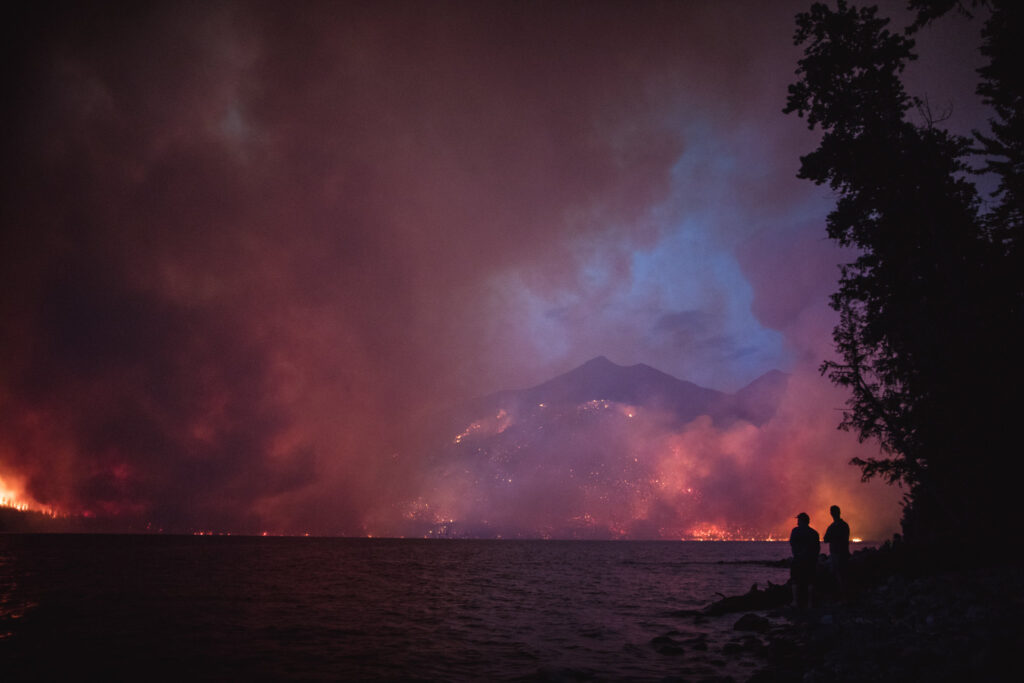This article was originally published by the Frontier Institute.
We are, thankfully, reaching the end of wildfire season in Montana. But as the smoke clears, we’re faced with a bleak reminder of the destruction that comes every summer.
Just this year, nearly 900,000 acres have burned from more than 2,400 wildland fire incidents in our state. Fires have cost human lives and homes, destroyed forage and timber, polluted our air and water, destroyed wildlife habitat and emitted enormous amounts of carbon. While fire is a naturally occurring event and several factors are contributing to increased fire risk, fuel loading is a major driver of the catastrophic fires we see today. After a summer of flames and smoke, policymakers can—and must—improve policies to reduce the risk of future catastrophic wildfires.
Improving forest health and mitigating wildfire risk will require long-term changes, but forest restoration projects offer a way to address these issues in the short term. As my PERC colleagues found in our recent report Fix America’s Forests, there are ways to accelerate forest restoration—and they don’t require the government to get even more heavy-handed than it already is.
Litigation is a major obstacle to getting forest restoration work done on the ground. Even when public land managers set out to thin a forest, litigation often holds up the project and makes it more expensive. The Bozeman Municipal Watershed Project demonstrates the worst-case scenario: red tape and litigation combining to delay a restoration project. In 2004, the Forest Service and the city of Bozeman recognized that wildfire risk in the Custer-Gallatin National Forest threatens 80% of the city’s drinking water. What ensued was years of litigation by a few environmental groups in attempts to stop the project on procedural, environmental, and other grounds. Finally, just this year, the Forest Service cleared all of the legal obstacles and was able to break ground on the restoration project.
This example demonstrates just how complicated it is to conduct forest restoration because, even when professional land managers, city leaders and water treatment experts agree, one group can sue and hold up the entire process. Reforms to the approval process can help move important projects forward while ensuring that everyone still has a voice. One is to increase the scale and use of categorical exclusions, which simplify the environmental review process for activities with known impacts. Other options include limiting Endangered Species Act consultations to projects with on-the-ground impacts to protected species and requiring lawsuits to be filed quickly, reducing the specter of litigation. These tools can help encourage collaboration rather than conflict when it comes to approving forest restoration projects.
Another challenge to conducting forest restoration is that so many Forest Service resources are sucked up by fire fighting there’s not much left for fire prevention. Montana can help address this need by continuing to partner with the Forest Service to do active forest management on federal lands in our state. Through a Good Neighbor Agreement signed in 2018, the Montana Department of Natural Resources and Conservation has treated nearly 5,500 acres and completed or has under contract 13 timber sales on federal lands. Gov. Greg Gianforte is working to expand Good Neighbor Authority opportunities, an important step in reducing wildfire risk in our state and allowing the state to bring in revenue from timber sales—which often helps defray the costs of doing the work on the ground.
Additionally, policymakers need to lift obstacles impeding timber markets. Private timber harvesters can play an essential role in removing timber from forests, where appropriate, and reducing fuel loads. Hindrances like short contract lengths and a ban on exporting raw logs make it risky for private businesses to invest in the infrastructure and capacity needed to pull fire-prone material out of the forest.
If Montana can work to reduce regulation and increase market and partnership opportunities, we can start to work toward summers free from catastrophic flames, smoke and ash.




